We spent an amazing morning with Kira Cassidy, a wolf biologist who works for the park. She showed us her office, which included an incredible amount of binders full of data on the park wolves, going all the way back to the reintroduction in 1995, and some pelts from wolves who have died over the years. She is a wealth of knowledge and answered our many questions about wolves. As educators, we wanted to know what information she would want us to share with our students. She said that the biggest takeaway from the wolf reintroduction project would be the lessons we have learned from the removal of the wolves from the park. Their removal was celebrated at the time as a good thing for the ecosystem. Years later, we realized how important apex predators are to the ecosystem, and began making efforts to correct our mistake. The wolf reintroduction is an amazing example of the power of habitat restoration and management.

So many years of data from so many wolf interactions was humbling to see in the Wolf Project offices.
Once we started driving, we encountered a crowd at the same place where we saw the Wapiti wolf pack yesterday, so we made a brief stop but only saw one and it was pretty far away. We continued on to Lamar Valley to look for a carcass that Kira suspected was there based on GPS data from the Junction Butte pack from about a week ago. We split up into 3 groups to cover more ground, and were able to find it—- SCORE! A bison carcass! Not much was left, but Kira gave us a glimpse of the scientific process the researchers use by letting us help to collect data on the carcass as they attempt to determine cause of death. We sawed the femur in half to collect a bone marrow sample, and then we extracted a tooth to take back to the lab for processing.
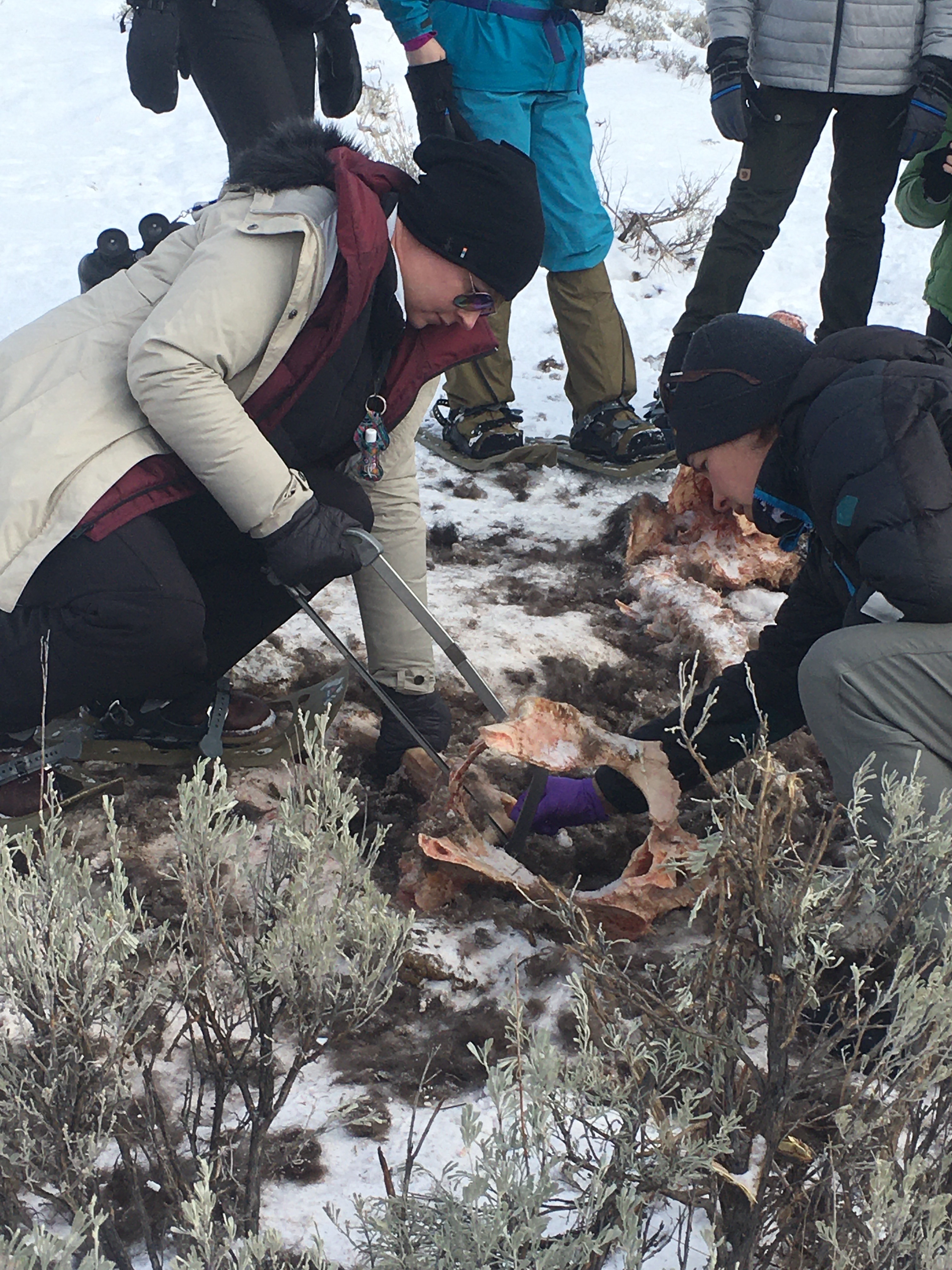
Jessica got to saw the femur in half to collect the marrow sample!
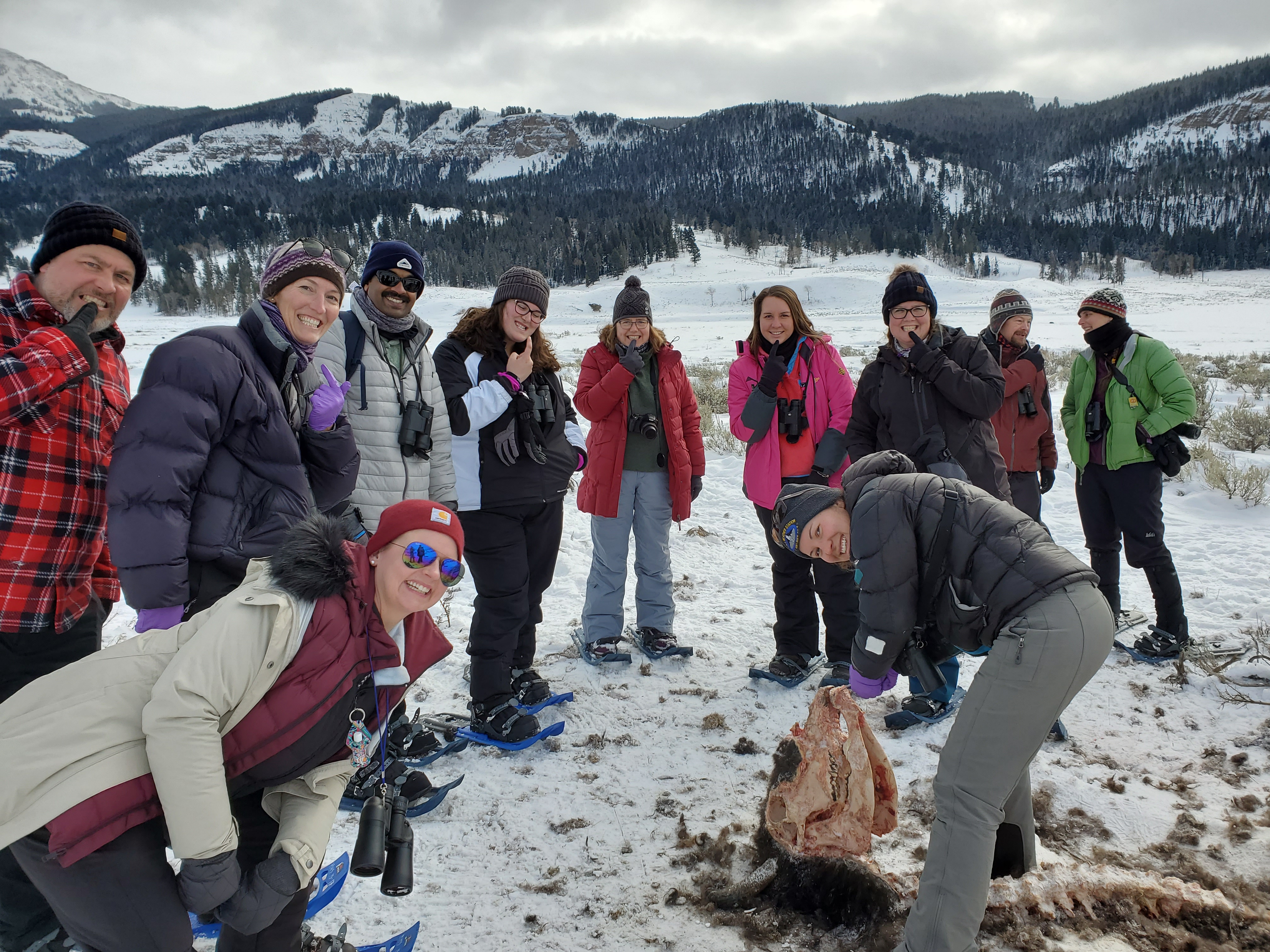
Everyone say “cheese”….so we can take a tooth sample!
On the drive back to Mammoth we saw one more wolf, a black likely from the Junction Butte pack. We also heard it give one low howl, which was amazing to experience. Today was also a great day for coyote, we saw close to 10 in various places.
After lunch we had a choice in our activities. Some of us went cross-country skiing, it was the first time for Vin and he got the hang of it pretty quickly! Melissa was in her element, we decided she was the alpha skier.
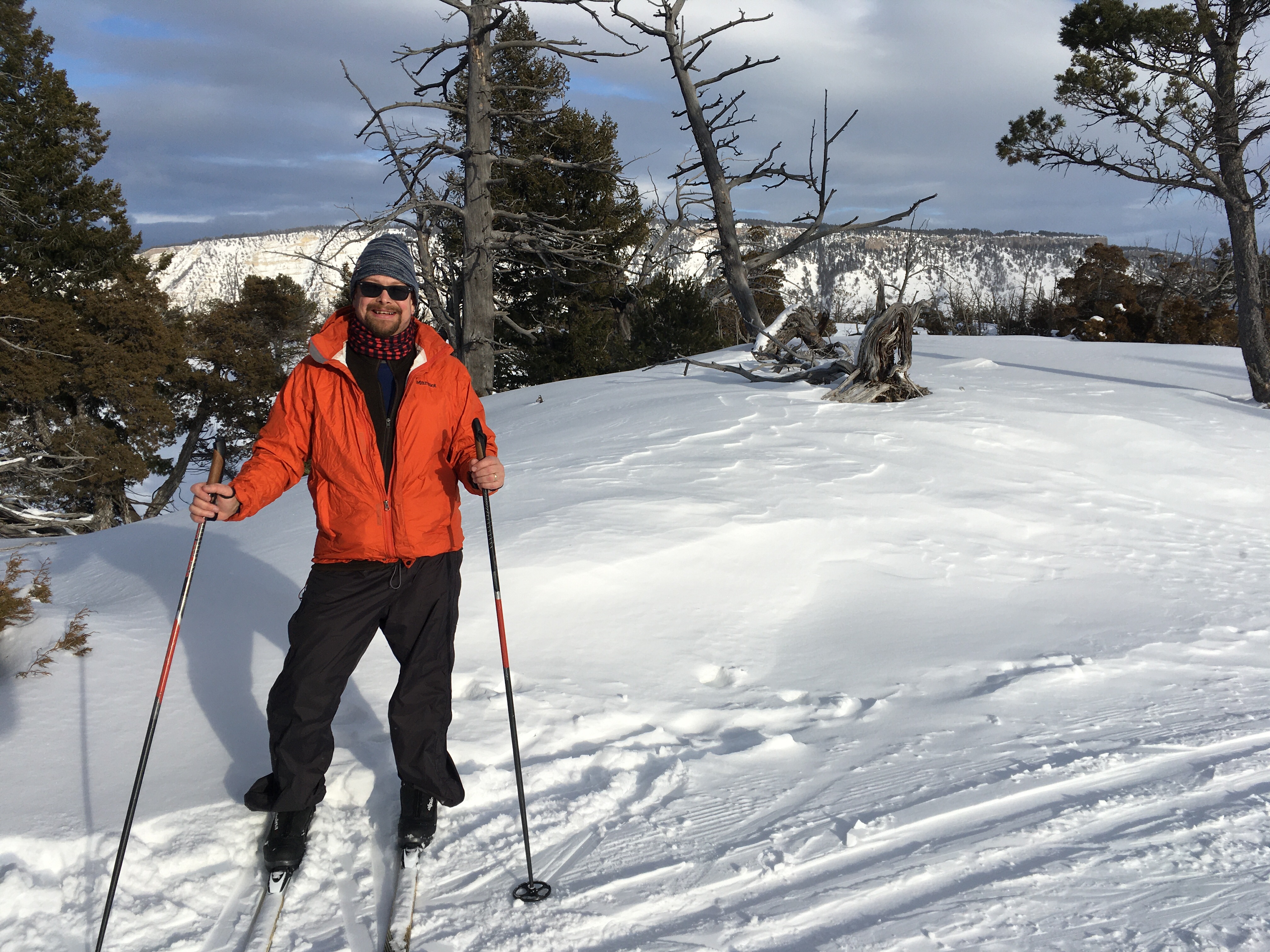
Randy shows off his cross-country skiing skills.
Another group went to the ‘Boiling River’ (actually the Gardner river, but this is the local name for the particular spot where hot water from a thermal feature runs into the cold river water). After a most scenic walk, we quickly disrobed in the snow and began the descent to the crystal clear water. Temperature reading from the infrared thermometer ranged from 127 degrees to 20 degrees.
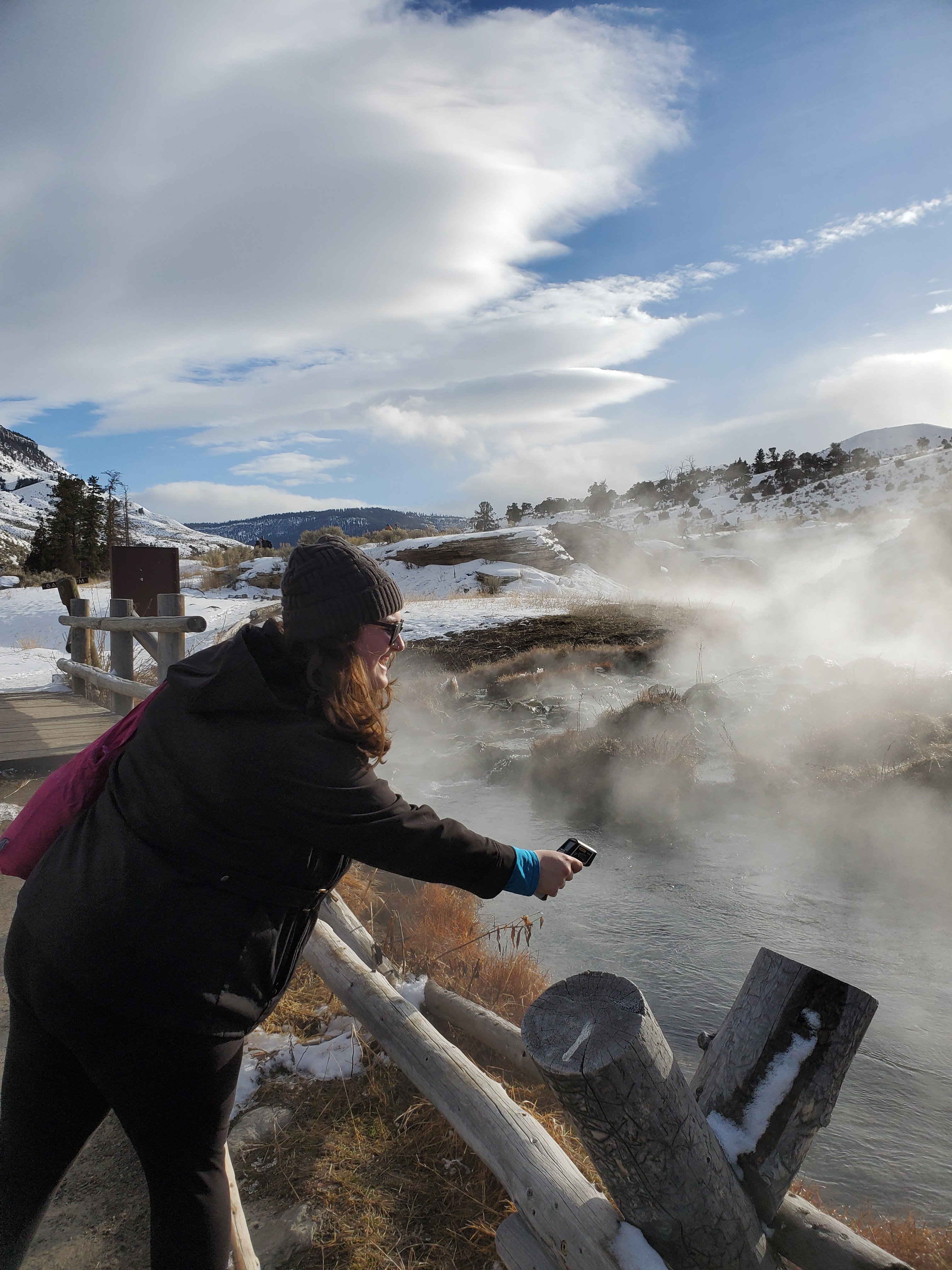
Blaire uses the infrared thermometer to measure the temperature of the water we are about to enter.
Slipping and sliding on the algae covered stones we waded in to find just the right temperature. With frozen eyelashes, we reveled in the rich mineral waters as we reflected on our phenomenal experiences. Navigating the hot springs and the flow of the icy river waters we successfully exited for a quick return to the car. American Dipper songbirds greeted and congratulated our daring spirits as we made a quick run for the suburban. Driving back to Mammoth Springs for a quick rinse in the shower, we spotted numerous bighorn sheep.
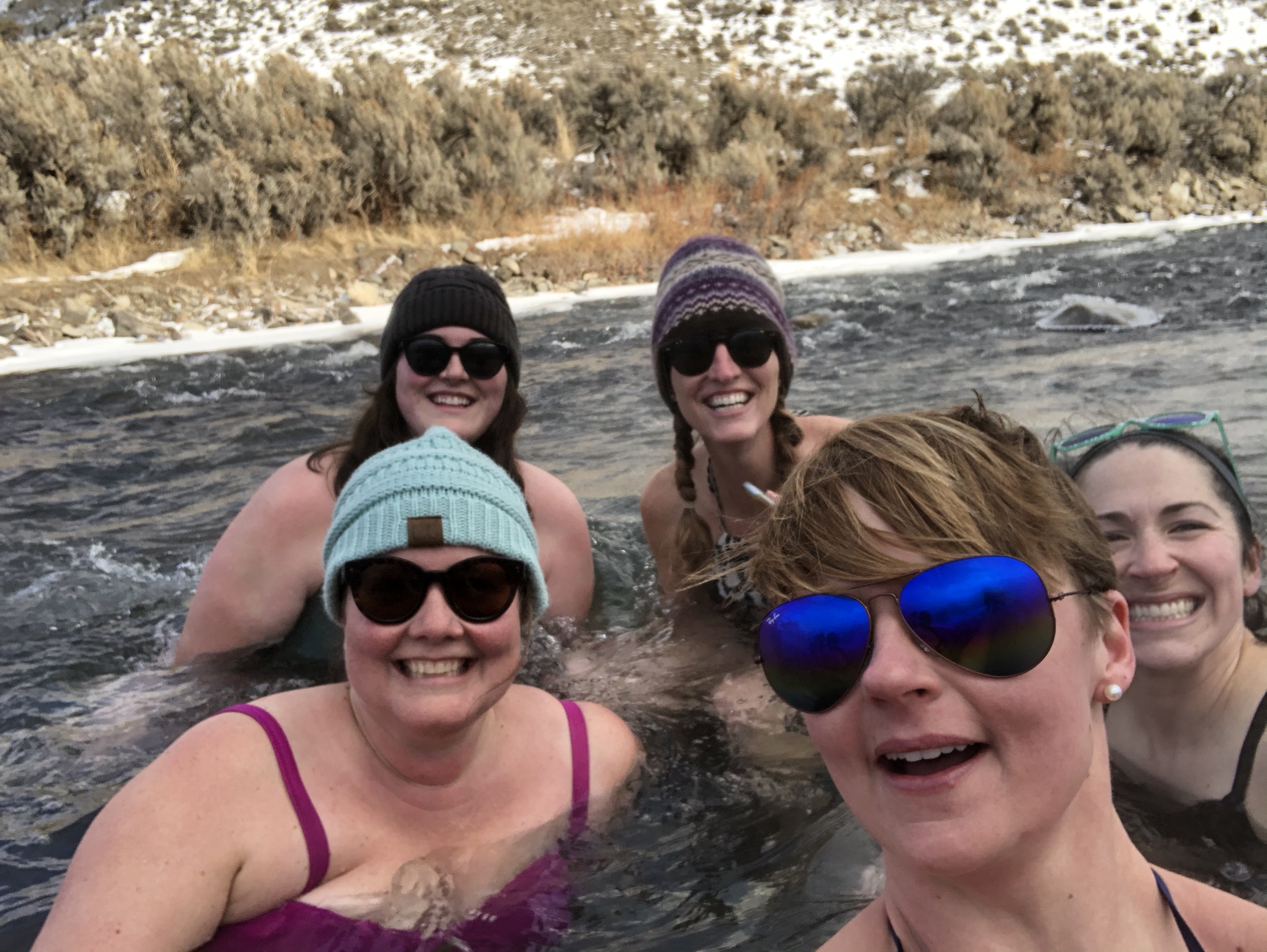
There is nothing like soaking in the ‘Boiling River’!
Today has been full of adventure and new experiences. More importantly, we have continued to build strong bonds with our teammates. We are so excited to continue this journey together!
